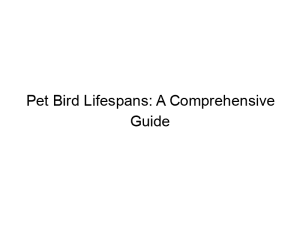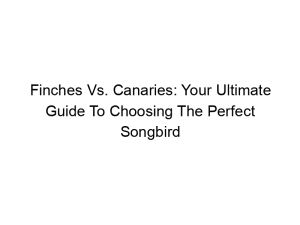Sharing your home with a bird can be incredibly rewarding, but maintaining a clean living space requires understanding avian habits and employing effective strategies. Can birds be potty trained? The short answer is: not in the same way as a dog or cat. However, with patience, consistency, and the right techniques, you can significantly reduce messes and create a cleaner, healthier environment for both you and your feathered friend. This comprehensive guide will explore everything you need to know, from understanding your bird’s natural behaviors to implementing practical cleaning strategies. You’ll learn how to create a designated potty area, recognize signs your bird needs to eliminate, and effectively clean up accidents. We’ll also discuss different bird species and their varying needs when it comes to hygiene.
Birds, unlike mammals, don’t have the
same controlled elimination mechanisms. They don’t typically associate a specific location with toileting. Their elimination is often reflexive, occurring during periods of rest or after eating. Understanding this is crucial to setting realistic expectations for “potty training.”
Species Variations
Different bird species have different elimination habits. Smaller birds like finches tend to eliminate more frequently than larger parrots. Parrots, while capable of some degree of learned toileting, are generally less predictable. This understanding is key when selecting appropriate training methods.
Creating a Designated Potty Area
Choosing the Right Location
Select a spot easily accessible to your bird, preferably near its favorite perches or play areas. A designated area helps create a routine for your bird, but never force it to use this area.
Using Bird-Safe Materials
Use absorbent, washable materials that are also non-toxic and safe for your bird if they come into contact with them. Avoid anything that could release harmful chemicals or become a choking hazard.
Visual Cues and Positive Reinforcement
Try placing a small, bird-safe tray or paper lined area in the chosen location. Positive reinforcement such as treats or praise when your bird successfully eliminates near that area can help condition it to associate that spot with toileting.
Recognizing Signs Your Bird Needs to Eliminate
Behavioral Cues
Observe your bird’s behavior. Signs include squatting, ruffling feathers near the vent, or a change in posture. Timing is key; catch your bird during these cues and gently guide it to its designated potty area.
Physical Cues
Pay attention to the consistency of droppings. Understanding your bird’s normal elimination pattern can help you anticipate when they might need to go. Unusual changes in frequency or consistency may warrant a vet visit.
Effective Cleaning Methods and Products
Daily Cleaning Routine
Establish a daily cleaning schedule, focusing on the designated potty area and any spots that frequently get soiled. Regular cleaning prevents the buildup of bacteria and odors.
Safe Cleaning Products
Use bird-safe cleaning products, avoiding harsh chemicals or fragrances that could harm your bird’s respiratory system or irritate its sensitive skin. Diluted white vinegar is a safe and effective cleaner.
Disinfecting and Sanitizing
Regularly disinfect your bird’s cage, perches, and toys to eliminate bacteria and viruses. Follow product instructions carefully, ensuring thorough rinsing to remove any residue before returning your bird to its cage.
Advanced Training Techniques
Consistency is Key
Successful “potty training” relies heavily on consistency. Stick to your chosen potty area and reinforcement method to avoid confusing your bird.
Positive Reinforcement and Rewards
Positive reinforcement, such as treats or verbal praise, is much more effective than punishment. Reward your bird immediately after successful elimination in the designated area.
Patience and Understanding
Remember that birds don’t understand human concepts of hygiene. Be patient, consistent, and understanding throughout the process. It might take weeks or even months to see improvement.
Dealing with Accidents
Immediate Cleanup
Clean up accidents promptly to prevent the buildup of ammonia and odors, which can negatively impact your bird’s respiratory health. Use absorbent materials and bird-safe cleaning products.
Preventing Future Accidents
Analyze the circumstances surrounding accidents. Was the accident due to a lack of access to the designated potty area, or were there distractions? Adjust your approach based on your observations.
Maintaining a Clean Home Environment
Proper Cage Placement
Avoid placing your bird’s cage in high-traffic areas where it might be disturbed while eliminating.
Regular Cage Cleaning
Deep clean your bird’s cage thoroughly at least once a week to remove any accumulated debris or droppings.
Air Quality
Ensure good air circulation to prevent the buildup of ammonia and other airborne particles that can affect your bird’s respiratory health.
Comparing Different Bird Species
Parrots vs. Smaller Birds
Parrots are generally more challenging to “potty train” than smaller birds due to their independent nature and greater size. Smaller birds, while still not truly potty trained, often exhibit a greater tendency to use a specific area due to their smaller size and more frequent elimination.
Individual Bird Personalities
Even within a single species, individual bird personalities play a significant role. Some birds are naturally more receptive to training than others. Be patient and adjust your approach based on your bird’s individual personality.
The Role of Diet and Hydration
Diet’s Impact on Droppings
Your bird’s diet can influence the consistency and frequency of its droppings. A balanced diet typically leads to healthier and more predictable elimination patterns.
Hydration and Elimination
Ensure your bird has access to fresh water at all times. Dehydration can lead to harder, more difficult-to-clean droppings.
Frequently Asked Questions
What are the benefits of trying to establish a potty area for my bird?
Establishing a potty area, though not guaranteeing complete cleanliness, greatly reduces mess and makes cleaning easier and less frequent. It also contributes to a cleaner, healthier environment for both your bird and yourself by minimizing exposure to harmful bacteria and ammonia.
Is it cruel to try and potty train my bird?
No, it’s not cruel. It’s about creating a cleaner environment and improving the relationship between you and your bird through positive reinforcement. The focus should always be on positive reinforcement and never punishment.
My bird keeps pooping outside its cage. What should I do?
This is common, especially with less trained birds. Try to increase the frequency of cage cleaning, provide more toys and perches inside the cage to encourage it to stay inside more, and consider moving its cage to a more convenient and less distracting location.
What if my bird has diarrhea?
Diarrhea in birds is a serious issue that requires immediate veterinary attention. It could indicate a medical problem and should not be ignored.
Final Thoughts
While you can’t completely “potty train” a bird in the same way you would a dog or cat, you can significantly improve the cleanliness of your home with patience, consistency, and the right strategies. By understanding your bird’s natural elimination habits, creating a designated potty area, and using positive reinforcement, you can create a cleaner and healthier living environment for both you and your feathered friend. Remember, every bird is an individual, and what works for one bird may not work for another. Be patient, adaptable, and focus on creating a positive and rewarding experience for your bird. With the right approach, you can minimize messes and maximize the joy of sharing your home with a wonderful avian companion.




